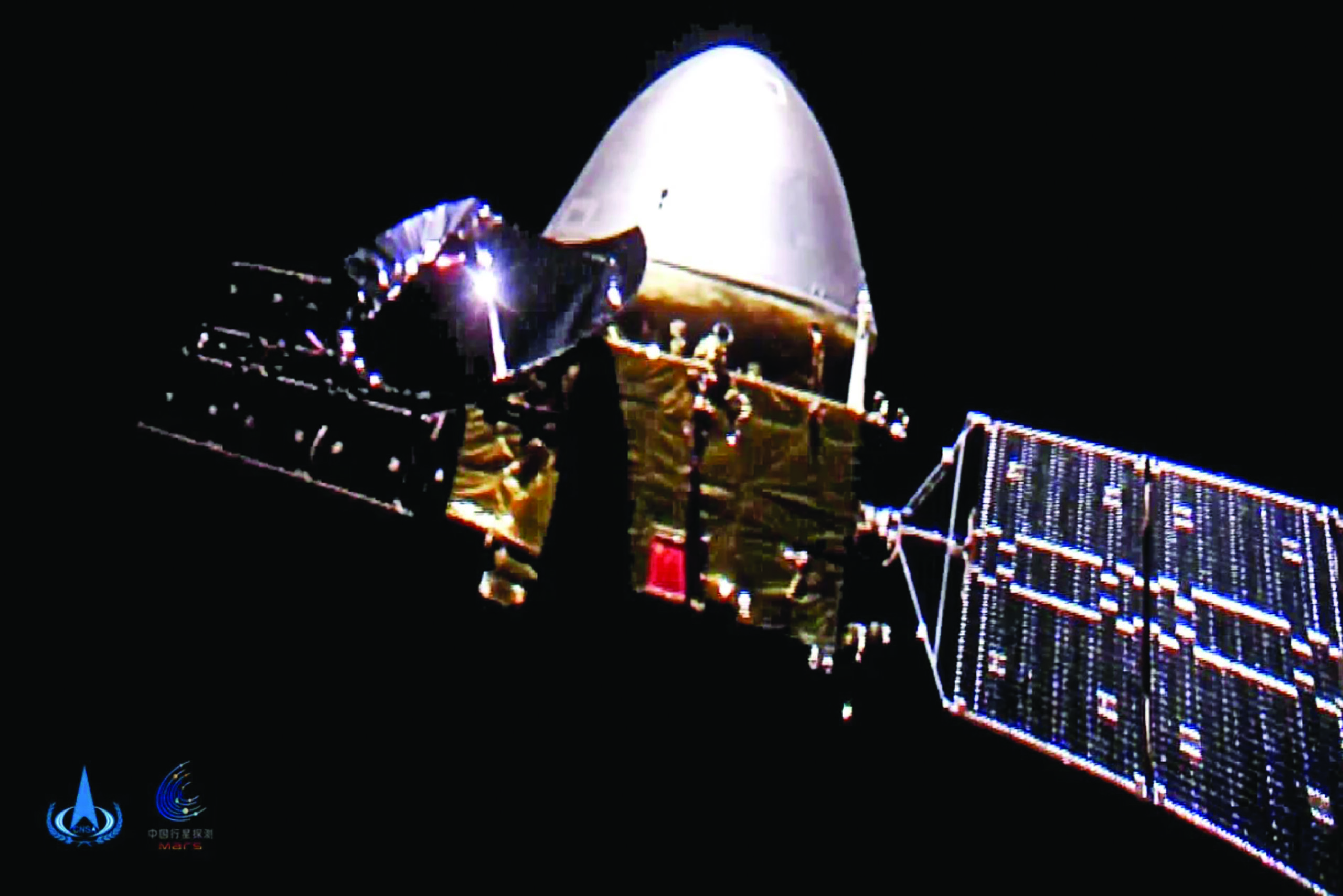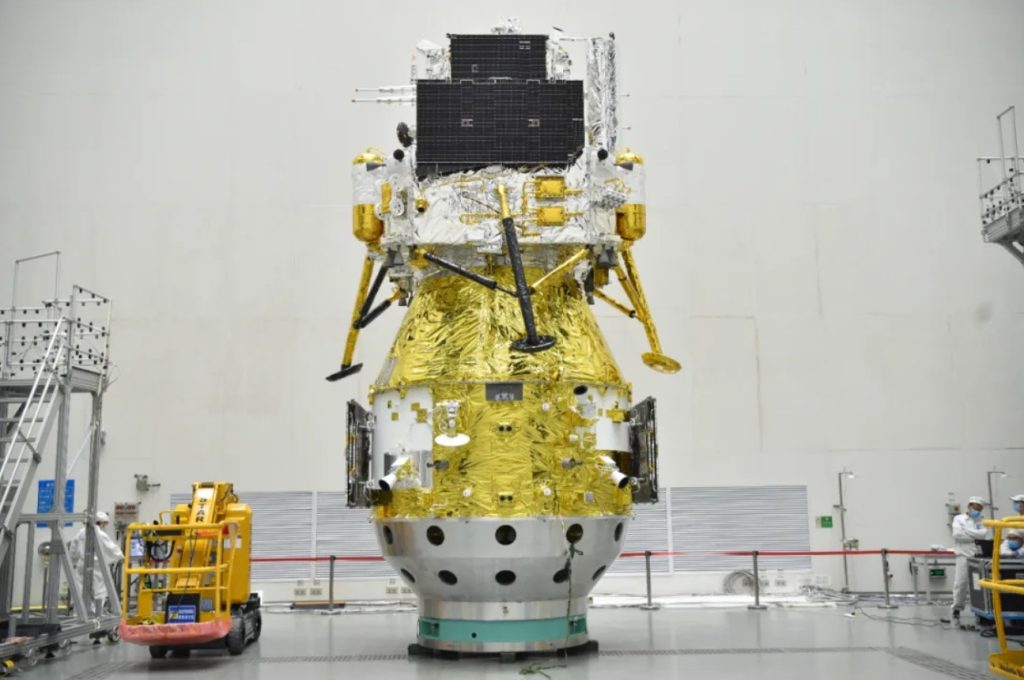HELSINKI — The Chang’e-6 spacecraft from China seems to have a previously unrevealed lunar rover for the mission’s exploration plans on the far side of the moon.
Chang’e-6 was launched on May 3 with a Long March 5 rocket from Wenchang. The mission aims to bring back samples from the far side of the moon to Earth for the first time.
Before the launch, China had shared the objectives, landing site, and scientific instruments for the mission. However, the China Academy of Space Technology (CAST) revealed an image after the launch showing a rover attached to the mission lander.
Chang’e-6 was originally a backup plan for the Chang’e-5 mission in 2020, which successfully returned samples from the near side of the moon. Now, it has been repurposed for a more ambitious sampling mission on the far side. The backup Chang’e-4 mission also followed a similar process after the success of the Chang’e-3 lander and rover mission by landing on the lunar far side.
The Chang’e-6 mission has new international payloads from France, Sweden, Italy, and a Pakistani cubesat, as well as an additional rover, which was not part of the Chang’e-5 mission. Not changed.Not changed.
Not much is known about the rover, but the Shanghai Institute of Ceramics (SIC) under the Chinese Academy of Sciences (CAS) mentioned it in a document. It suggests that the small vehicle is equipped with an infrared imaging spectrometer. post The instrument would use the way different minerals and compounds absorb and emit infrared radiation to determine the composition of rocks, soil, and regolith on the lunar surface, which could help in detecting water.
It is unclear how the rover, attached to the side of the lander, will reach the surface. It could be released, use a foldout ladder, or some other mechanism. The rover could potentially communicate with the lander using WiFi. Due to the small size of the vehicle and the short mission lifetime, it is likely that the rover will have limited operational time and objectives.
Not changed.

Not changed.
The Tianwen-1 orbiter also repeated this unexpected move with another detachable camera while orbiting Mars. Not changed. Not changed.
The Not changed.Not changed.
Not changed. Not changed. Not changed.
Not changed.
Chang’e-6 is expected to reach the moon late Tuesday Eastern Time (early Wednesday UTC, May 8) and enter lunar orbit. There is no clear official timeline for the mission so far, but according to information from the Deep Space Exploration Laboratory (DSEL) under the China National Space Administration (CNSA), the mission is expected to last 53 days from launch to landing.
The lighting conditions above the landing area in Apollo crater may not be suitable for landing and surface operations immediately. It's expected that the sun will set over Apollo crater early on May 13, according to moon observation software.
Sunrise is expected on May 28, so Chang’e-6 will probably try to land in early June. This means the spacecraft will spend more than three weeks orbiting the moon before attempting to land. The timing of the landing attempt will depend on the spacecraft’s orbit and limitations related to the lighting conditions on the surface for generating power.
Like with Chang’e-5, it's likely that sampling operations will be finished within 48 hours of landing. The samples will be sent into lunar orbit by a vehicle, which will then follow the Chang’e-6 orbiter. Based on the earlier mission, it's likely that they will meet and dock around two days after launch, and the ascender will probably be discarded a couple of days later.
After that, the orbiter will get ready to leave lunar orbit at a calculated time. It will then release a reentry capsule just before returning to Earth, around June 25. If there is any remaining fuel, the orbiter will probably use its engines to send the spacecraft on another mission. The Chang’e-5 orbiter went to Sun-Earth Lagrange point 1 and then entered a distant retrograde orbit around the moon as part of extended missions. If the Chang’e-6 mission is successful, the samples it delivers could change our understanding of the Earth and moon. They could also provide new clues about the history of the early solar system. China’s Chang’e-6 spacecraft seems to include a previously undisclosed lunar rover as part of its exploration plans for the far side of the moon. distant retrograde orbit as part of extended missions.
If successful, samples delivered by the Chang’e-6 mission could change our understanding of the Earth and moon. They could also provide new clues as to the history of the early solar system.









